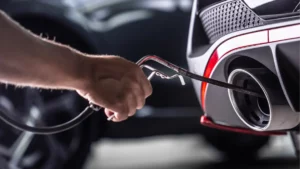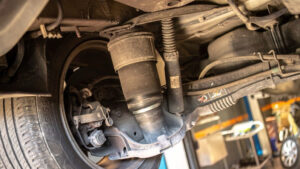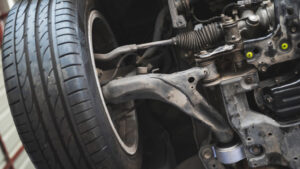Remember when figuring out what was wrong with your car felt like a mystery? Those days are long gone. Today, automotive computer diagnostics are leading a revolution in car care, making it faster and more accurate to diagnose issues. This high-tech approach blends the latest technology with automotive know-how, pinpointing car problems in a snap. It’s all about getting your car the right fix from the start, cutting down on guesswork, and getting you back on the road quicker.
Whether you’re dealing with a pesky check engine light or something more complex, computer diagnostics have got it covered, transforming car repair into a science. In this article, we’ll talk about how automotive computer diagnostics has revolutionized automotive repair.
What is Automotive Computer Diagnostics?
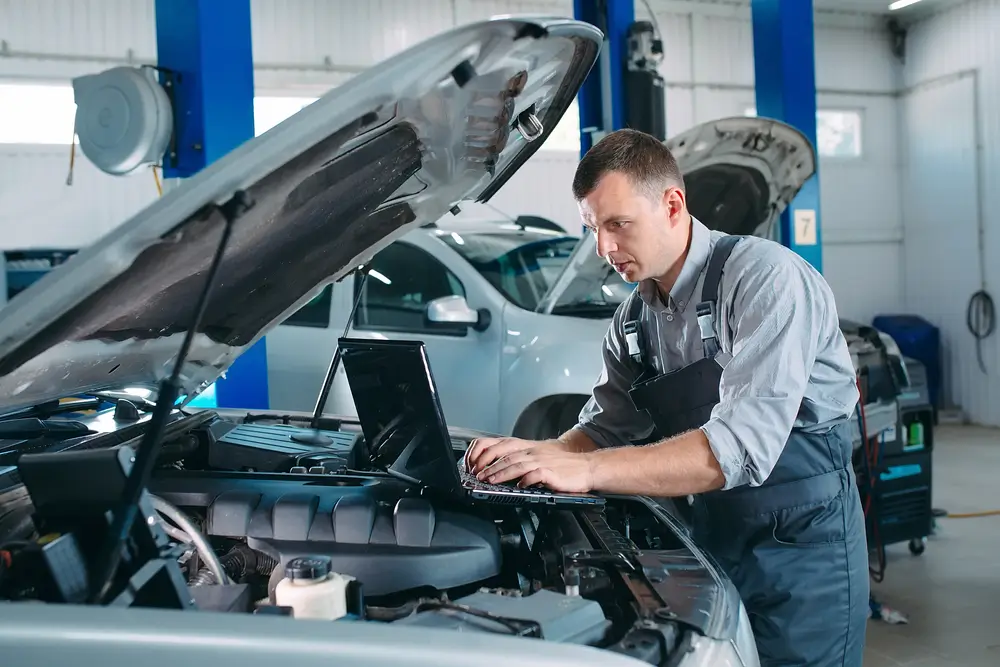
Automotive computer diagnostics is a modern approach used by mechanics to quickly and accurately identify issues within a vehicle’s systems. It involves using specialized hardware and software to interface with a car’s onboard computer system, which monitors and controls various functions, from the engine and transmission to the braking system and beyond.
This technology reads data from the vehicle’s computer, including error codes and performance metrics, to pinpoint malfunctions or inefficiencies. Essentially, it’s like giving the car a comprehensive health check-up, where the diagnostic tools listen to the “stories” told by the car’s computer. This process allows technicians to understand exactly what’s wrong without invasive disassembly or guesswork, leading to more accurate repairs and maintenance.
Why Do We Use Computer Diagnostics?
Have you ever wondered how mechanics pinpoint issues in today’s complex vehicles so quickly? The answer lies in the powerful technology of computer diagnostics. This method revolutionizes how we approach car maintenance and repair for several reasons:
Precision
It eliminates much of the guesswork traditionally associated with vehicle repairs. By reading error codes directly from the vehicle’s onboard computer, technicians can pinpoint specific issues without unnecessary investigation or disassembly.
Time and Cost Efficiency
With the ability to quickly identify problems, computer diagnostics can significantly reduce the time and labor involved in diagnosing and fixing a vehicle, leading to lower overall repair costs for the owner.
Preventive Maintenance
By monitoring the health of a vehicle’s systems, computer diagnostics can help identify potential issues before they escalate into serious problems, allowing for preventive maintenance that can extend the life of the vehicle and avoid costly repairs down the line.
Comprehensive System Analysis
Modern vehicles are complex machines with interconnected systems. Computer diagnostics provide a holistic view of a vehicle’s condition, assessing everything from engine performance and emissions to electrical systems and beyond.
Enhanced Safety
Many vehicle issues related to brakes, airbags, and other safety systems can be quickly identified through computer diagnostics, ensuring that critical safety features are fully operational and reducing the risk of accidents.
Adaptability
As vehicles evolve and incorporate more advanced technology, computer diagnostics tools are continuously updated to keep pace, ensuring that even the latest models can be serviced effectively.
How Does Auto Diagnostics Work?
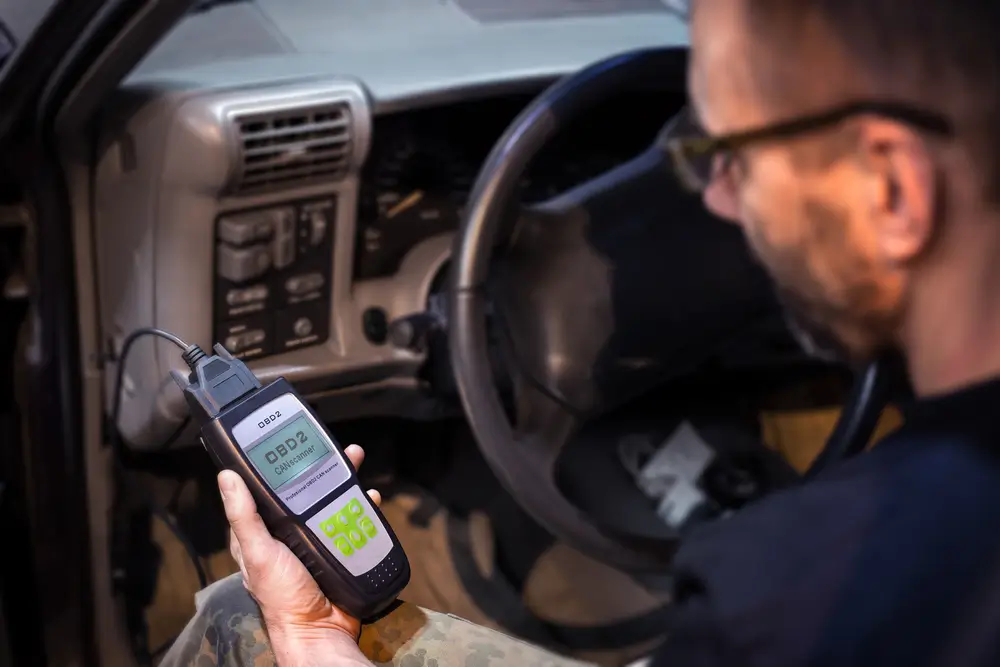
Auto diagnostics work through a sophisticated yet straightforward process that leverages the vehicle’s onboard computer system, a hub that monitors and controls various operational aspects of the car.
Here’s a breakdown of how it unfolds:
1. Connection
The process begins with a diagnostic tool, often referred to as a scanner, being connected to the vehicle’s onboard diagnostics port, commonly known as the OBD-II port. This port is a standardized gateway to the vehicle’s computer system and is usually located under the dashboard.
2. Scanning
Once connected, the scanner communicates with the vehicle’s computer system, requesting access to stored information. This system continuously monitors the performance and status of various components, from the engine and transmission to emissions systems and beyond.
3. Error Codes
If the computer system detects an issue, it logs a Diagnostic Trouble Code (DTC). These codes are standardized sets of numbers and letters that identify specific problems. For example, a code might indicate a malfunctioning oxygen sensor or a misfiring engine.
4. Analysis
The diagnostic tool retrieves these codes, which the technician can then review. Each code is associated with a particular issue or set of issues. By analyzing these codes, a technician can understand what’s wrong with the vehicle without having to manually inspect each component.
5. Troubleshooting
Alongside error codes, the diagnostic tool can also provide real-time data on the vehicle’s operation, such as engine temperature, RPM, and fuel injection systems. This data helps in further troubleshooting, allowing the technician to narrow down the cause of the problem and decide on the best course of action for repair.
6. Resetting
After repairs are made, the diagnostic tool can be used to clear the error codes and reset the vehicle’s computer system, ensuring that it starts monitoring afresh with no lingering issues flagged.
What Components of a Vehicle Can Automotive Computer Diagnostics Assess?
Automotive computer diagnostics can assess a wide range of components within a vehicle, thanks to the sophisticated technology embedded in modern cars. This comprehensive approach allows for a detailed check-up of various systems to ensure everything is functioning correctly.
Some key components and systems that computer diagnostics can evaluate include:
Engine Management System
This is perhaps the most critical component assessed by diagnostics. It includes checking the engine for issues related to ignition timing, fuel injection rates, air intake, and more.
Transmission
Computer diagnostics can identify problems within the transmission system, such as shifting issues, fluid leaks, or irregularities in the torque converter.
Braking System
Diagnostics can reveal issues with the anti-lock braking system (ABS), including sensor failures and problems with the brake fluid pressure.
Exhaust System
The system’s efficiency, including the catalytic converter’s performance and emission levels, can be assessed, helping ensure the vehicle meets environmental standards.
Electrical Systems
This includes the battery, alternator, starter motor, sensors, lights, and dashboard indicators. Diagnostics can pinpoint electrical faults or malfunctions.
Air Conditioning and Heating
Diagnostics can check for proper operation of the HVAC system, including compressor issues, refrigerant levels, and airflow problems.
Steering and Suspension
Issues with steering fluid, worn-out suspension components, or alignment problems can be identified through computer diagnostics.
Safety Features
Important safety features like airbags, seat belt tensioners, and electronic stability control (ESC) systems are also covered in a diagnostic check.
Fuel System
The diagnostics can evaluate the fuel injector’s performance and fuel pump efficiency and detect any leaks or blockages within the fuel system.
Emissions
Computer diagnostics play a crucial role in monitoring the vehicle’s emissions, ensuring it complies with environmental regulations by checking the oxygen sensors, EGR valve, and more.
What Are the Common Symptoms That Prompt Automotive Computer Diagnostics?
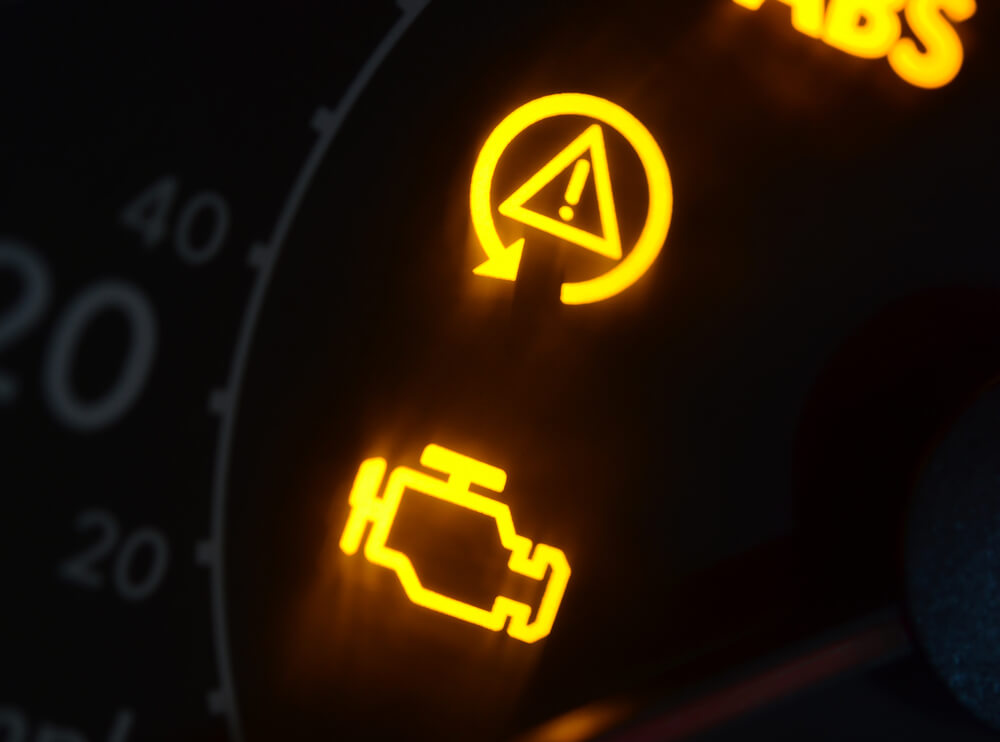
Common symptoms that prompt the need for automotive computer diagnostics are often signals that something isn’t quite right with your vehicle. These symptoms can range from the obvious to the subtle, but each serves as a cue that your car may need a closer look.
Here are some of the most frequent indicators:
Check Engine Light
Perhaps the most well-known signal, the check engine light illuminating on your dashboard, is a direct call for diagnostic attention. It means the vehicle’s computer has detected an issue that needs to be investigated.
Strange Noises
Unusual sounds coming from any part of the vehicle, such as knocking from the engine, squealing brakes, or humming from the transmission, can indicate problems that diagnostics can pinpoint.
Reduced Fuel Efficiency
If you start noticing your vehicle guzzling more fuel than usual without a change in driving habits, it could signal issues such as sensor malfunctions or exhaust system problems.
Performance Issues
Symptoms like stalling, reduced power, rough idling, or difficulty starting the engine are all indicators that something might be off with the vehicle’s internal systems.
Unusual Smells
Odd smells, such as a sweet scent indicating a coolant leak, a burning smell from overheated brakes, or an oil leak, can also necessitate a diagnostic check.
Transmission Problems
Difficulty in shifting gears, whether in an automatic or manual transmission vehicle, can be a sign of transmission issues that require immediate diagnostic attention.
Electrical Problems
Issues with starting the vehicle, dimming lights, or malfunctioning electronic components like the radio or dashboard lights are signs of electrical problems.
How is Automotive Computer Diagnostics Conducted?
Automotive computer diagnostics is conducted by connecting a diagnostic scanner to the vehicle’s onboard diagnostics port, typically the OBD-II port, found under the dashboard. This scanner communicates with the vehicle’s computer system, which monitors and records data on the vehicle’s performance and any issues it encounters. The scanner reads these records, specifically looking for diagnostic trouble codes (DTCs) that the system generates when it detects a malfunction or inefficiency in any of the vehicle’s operations.
Once these codes are retrieved, a technician can interpret them to pinpoint specific issues, ranging from engine malfunctions to emissions problems. Modern diagnostic tools read codes and provide real-time data on the vehicle’s operating conditions, further aiding in accurate diagnosis. This process allows for targeted repairs, directly addressing a problem’s root cause, which can save time and money by eliminating guesswork and unnecessary part replacements.
Who Performs Automotive Computer Diagnostics?
Automotive computer diagnostics are typically performed by professional auto mechanics or technicians who are equipped with the necessary diagnostic tools and software and trained in diagnosing auto repair problems.
In addition to standalone auto repair shops, automotive dealerships also have qualified technicians who specialize in brand-specific diagnostic equipment and procedures for their vehicles. The expertise of these professionals ensures that the diagnostic process is conducted efficiently, leading to precise identification and resolution of any issues detected by the vehicle’s computer system.
What Are the Benefits of Automotive Computer Diagnostics?
Automotive computer diagnostics bring a host of benefits that transform the traditional approach to vehicle maintenance and repair. With the precision of mechanic computer diagnostic tools, identifying issues within a vehicle’s complex systems becomes a task of accuracy rather than guesswork. This pinpoint precision streamlines the repair process and significantly cuts down on the time and costs associated with traditional diagnostics automotive methods.
By diagnosing auto repair problems before they escalate, vehicle owners can avoid the inconvenience and expense of major repairs down the line. Additionally, auto repair diagnostics provide real-time insights into the vehicle’s performance, allowing for adjustments that can prolong the car’s lifespan and preserve its value.
The advantages are clear: quicker diagnosis, pinpoint accuracy, and cost savings. By targeting the specific problem, automotive computer diagnostics streamline the repair process, avoiding the expense and time of trial-and-error methods.
Are There Any Challenges or Drawbacks to Automotive Computer Diagnostics?
While powerful, this technology is not infallible. Its effectiveness can be limited by outdated diagnostic tools or the technician’s experience level.
Here are a few challenges and drawbacks to consider:
Specialized Equipment and Training
Automotive computer diagnostics require mechanics to possess specific skills and knowledge for effective use. This necessitates ongoing training and significant investment in the latest diagnostic tools, which can be quite costly.
Reliance on Electronic Diagnosis
The method may not identify every issue, particularly those mechanical problems not monitored by the vehicle’s computer system. There is a potential risk of overlooking problems that do not generate diagnostic trouble codes.
False Positives and Misinterpretation
The complexity of modern vehicles’ electronic systems can sometimes lead to the incorrect diagnosis of issues. This situation can result in unnecessary repairs or the replacement of parts that are not actually malfunctioning, thereby adding unnecessary expenses for the vehicle owner.
Access to Proprietary Software
The use of proprietary diagnostic software by vehicle manufacturers limits the ability of independent repair shops to access vital diagnostic information. Consequently, vehicle owners may be forced to rely on more expensive dealership services for diagnostics and repairs that could otherwise be performed at a lower cost by independent mechanics if they had access to the necessary diagnostic data.
Navigating the Future of Car Care with High-Tech Diagnostics at Status Automotive & Collision
The world of car repair has come a long way, thanks to automotive computer diagnostics. This tech has changed the game, making it easier and quicker to figure out what’s wrong with our cars. Gone are the days of guessing and unnecessary repairs. Now, we can get straight to the problem, saving time and money. It’s a big win for car owners and mechanics alike, ensuring repairs are spot-on every time. Traditional diagnostic techniques simply can’t match the efficiency and comprehensiveness of auto computer diagnostics.
If you’re looking for top-notch car care in Houston, Status Automotive & Collision is the place to go. They’re the best mechanics in town, with the latest diagnostic tools to tackle any issue your car might face. Whether it’s a tricky electronic issue or just regular maintenance, they’ve got you covered. With Status Automotive & Collision, you’re getting the best auto repair in Houston, powered by cutting-edge technology. Contact them today to get your vehicle checked.

